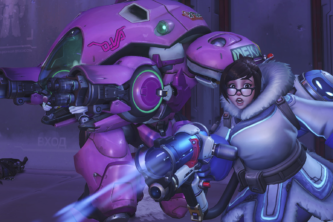Eugene Systems recently released the RTS Steel Division: Normandy 44 on to PC after it spent a month in pre-order beta. Eugene Systems also did Act of Aggression: Reboot Edition in 2015. They were also the same developers that also did R.U.S.E back in 2010. So they have quite a long history of making RTS games. Does this trip back to World War II with an improved engine and game mechanics give those of use interested in a World War II RTS something to get excited about ?
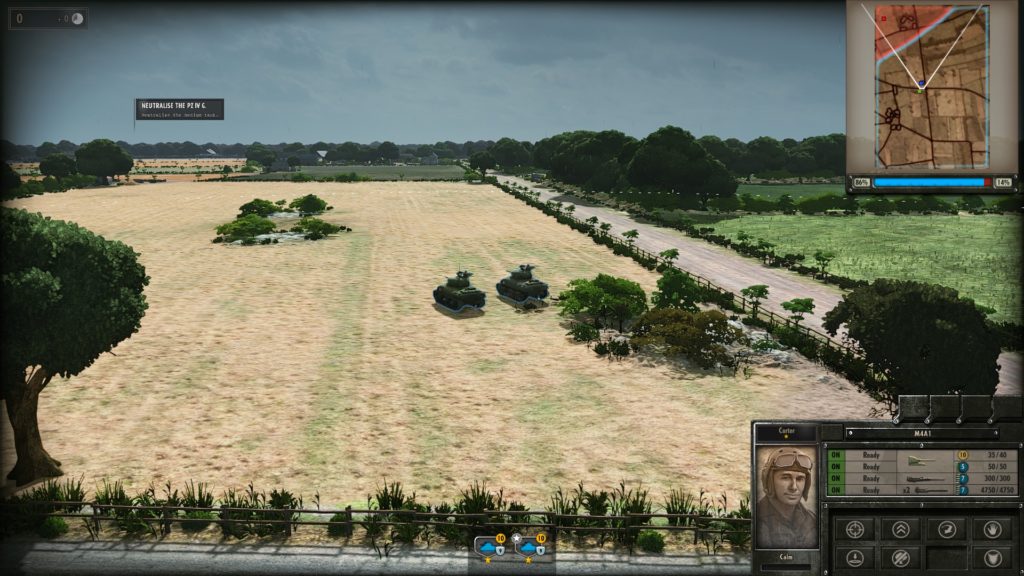
One of my fondest moments in gaming is when I first turned on the original Company of Heroes and was working my way though the tutorial and I was just awestruck with the amount of detail that went into the game. With Steel Division: Normandy 44 a lot of that same amazement has returned as far as visual presentation with regards to unit and world detail. You are able to zoom in on individual units and see above average textures on buildings and armor. This attention to detail is something that is both hard to find and always very much appreciated. This game has honestly got me excited about a game and that hasn’t happened in a long while. It’s refreshing to say the least.
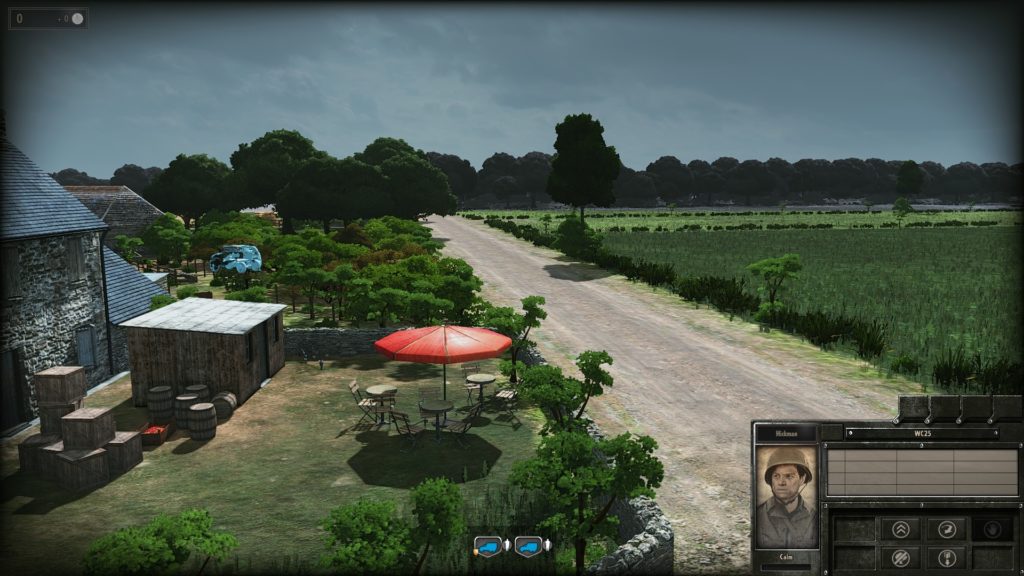
This is zoomed in on a random house on the map. They did not finish their picnic.
Gameplay
The core gameplay revolves around pushing and controlling over half the map. There is a red and blue line that divides the map visually and represents where the frontline is. The goal of each round is to own more of the map than your opponent.

Front lines Changing
While this theoretically sounds easy and straight forward it is only the beginning of where the tactics start. Each player starts out before the game picking a division, either Axis or Allies, and then after that you are tasked with creating a battlegroup based on the divisional choice.
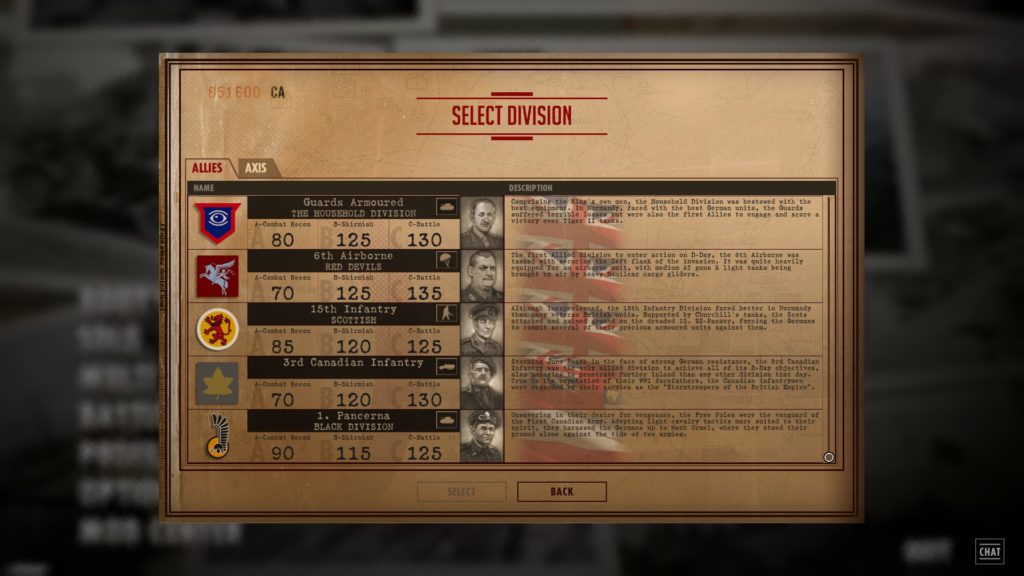
Allies Division selections

More options
The divisional choices limit troop choices and the number of different types of units you can bring into the match. Different division and deck choices made before the match begins plays a huge part into how the match plays out.
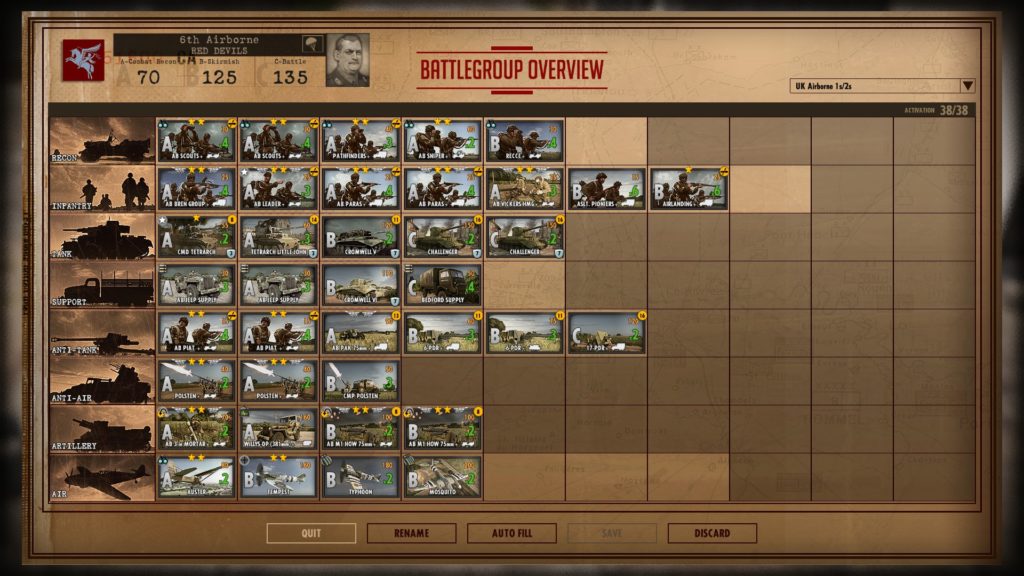
6th AB Battlegroup Options
Once the you choose your deck and the match starts you are given a number of starting points that you can spend to bring in any unit you want from phase A. The game is broken up into three phases A,B and C. Each phase is ten minutes long. After phase A ends then phase B begins and you can call in any unit that is either a phase B unit or phase A unit.
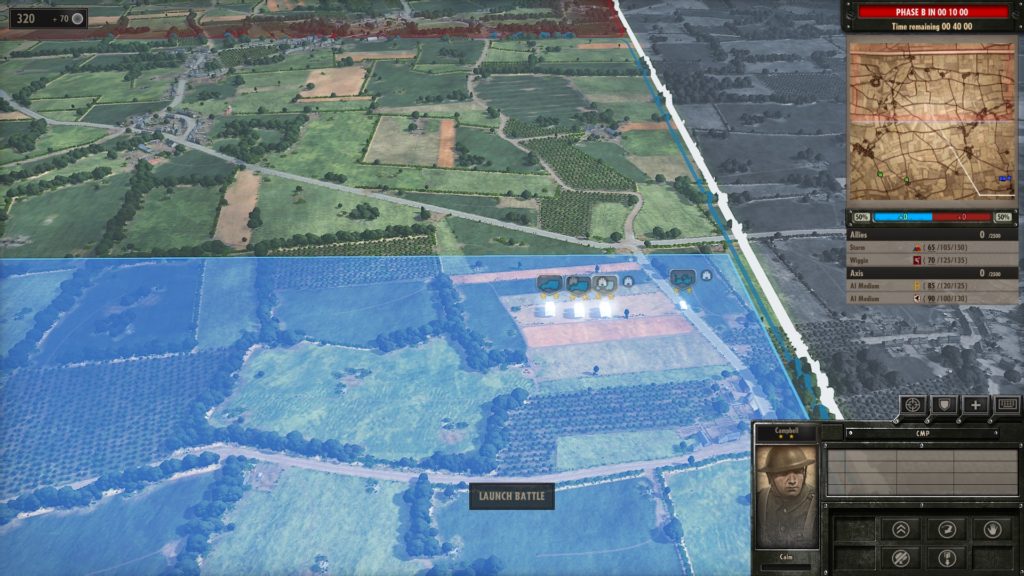
Start of the game unit placement.
During each phase you are given a specific amount of points each minute. This number is increased during each phase to allow the purchasing of more expensive, and theoretically more powerful units. This works well to both stop early game rushing and create a nice power curve where more powerful units cannot be bought early and abused.
This type of pre game strategics is something that both adds a layer of depth to the game and a fun deck building aspect to the game. This game delivers on the strategy both during match and during deck building.
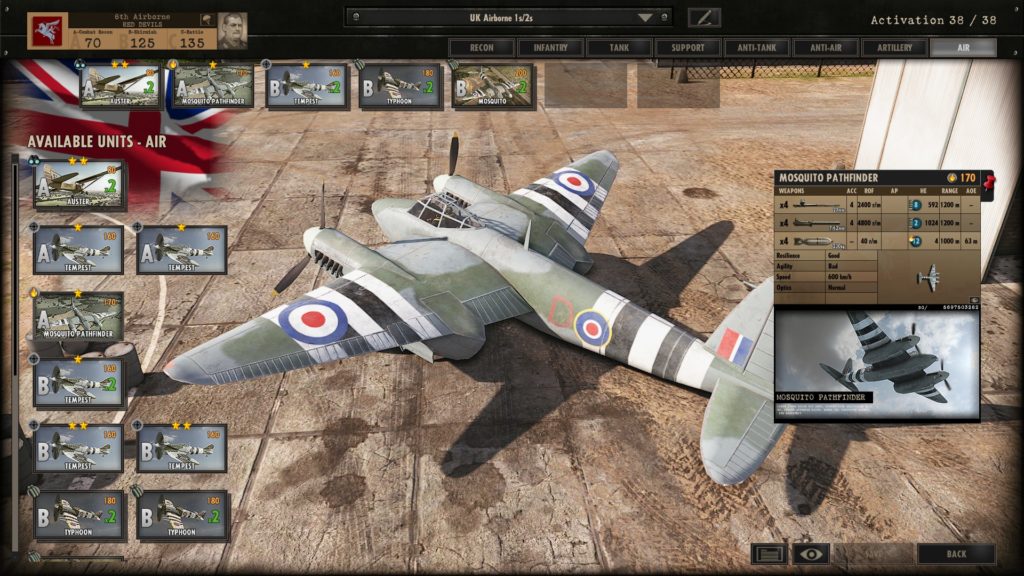
Card inspection during deck building
Sounds
While this game sounds good it’s nothing like battlefield or something quite as spectacular but they do a decent enough job to depict the action going on and it sounds alright, just nothing to write home about. I wish I had more to say about this but at the end of the day it just did not wow me and I was much more impressed with the visuals.
Visuals
As I alluded to at the start of this review and as you can see by the screenshots the visuals are quite impressive. Due to the distance you can zoom in and out, making the entire map be visible at once similar to Supreme Commander having such a high degree of detail is quite an impressive accomplishment. I was able to run the game maxed out at 1080p without running into frame rate problems in 1v1 and 2v2 games.
Windows 8.1 Pro
Memory:
– CORSAIR Vengeance LP 16GB DDR3
CPU:
– Intel Core i7-4790K Devil’s Canyon Quad-Core 4.0GHz
Video Card:
– EVGA GeForce GTX 980 Ti Classifed
In some of the single player games and larger games I did run into a few hiccups where frame rate would drop to around 40 and then go back up. I feel this is more of an issue with me having the settings up to high for the amount of units on the field then it is with game optimization. I did not try anything larger then a 4v4 so I can’t speak to how well that functioned. With how good I feel the game looks for being a larger scale RTS game I can’t really complain about the infrequent frame rate drop.

Large battle with view of the whole map
Game modes
As for game modes there are the standard ones, single player and multiplayer. The single player consists of three different campaigns. They follow different divisions through the days surrounding the D-Day invasion. While I appreciated the attention to historical detail with the American mission I found the degree of difficulty with the single player missions quite frustrating. After finishing the tutorial that I initially felt did a good job of explaining how to play the game, only for me to find out from others that there is a ton of depth and advanced things you can do to that are just not explained in the tutorial. There is also a skirmish mode where you can set up games vs the AI. Both playing with and against them if you wish. The multiplayer modes involve ranked and unranked game modes. There is also a quick play option that searches for you and matches you against someone. I’ve only just used the server browser to find games as I’m not sure how well that works.

Multiplayer modes
The selection of game modes were exactly what I was expecting nothing more and nothing less. It was quite refreshing to see proper game modes included in a modern RTS.
Final Thoughts
This is a game I’ve been waiting for. A World War II RTS that is more about strategy and less about RNG and what commanders you have purchased. To that regard this game is something new in a setting I prefer to be in. I only have a couple real complaints about the game. The first one being the tutorial doesn’t do a great job of explaining all the nuisances of the game, some of the things I learned from friends I felt were crucial to picking up the game quickly.
Due to this being a Paradox game there is always the possibility of a ton of DLC. Wargame Red Dragon had 3 paid pieces of DLC that were nations. While there isn’t much details on what DLC is planned for Steel Division we all know it’s coming in some form. Hopefully they do a good job and give us DLC the community want.
I felt the single player missions were difficult for a new player. With information just learned from the tutorial I was struggling to complete the main mission objectives. The third thing and I feel it’s the biggest is there is a steep learning curve to the game, I’ve spent 20~ hours in the game and I’m still learning. The deck building while an awesome feature can be overwhelming to newer players, I’d stick with the pre built decks until you get a feel for the game. My friends over at Count Down Gaming were really helpful and friendly with teaching me more about the game and allowing me to enjoy it more fully due to an increased understanding of game mechanics. Go visit them on discord and introduce yourself, they will be more than willing to help.
Review code was provided by the developer.
The Good
- World War II Setting
- Beautiful Visuals
- Innovative and strategic game mode
- Rewards smart gameplay
- Steam Workshop Support
The Bad
- Steep Learning Curve
- Tutorial Lacking detail
- Unknown DLC plans


